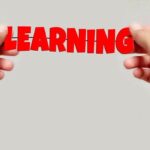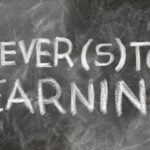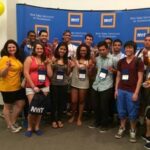The Bystander Effect is a well-known psychological study conducted by Bibb Latane and John Darley that grew out of the stabbing death of Kitty Genovese in 1964 while eyewitnesses looked on but did nothing to help. According to Wikipedia:
…individuals are less likely to offer help in an emergency situation when other people are present. The probability of help is inversely proportional to the number of bystanders. In other words, the greater the number of bystanders, the less likely it is that any one of them will help.
Robert Putnam’s famous book on the collapse of the American community, “Bowling Alone,” notes that buried in the Bystander Effect research is also the finding that the amount of social capital within a group plays a large role in determining if someone will help or not. The greater the social capital, the greater the chance they will help. In other words, you’re more likely to help a family member in trouble than a totally random stranger.
Social capital refers to the value one gains from relationships with others (human capital) or things (physical capital). For this post let’s only focus on human capital which can be further broken down into:
– Bonding Social Capital: The value one gains from their relationships with close family and friends
– Bridging Social Capital: The value one gains from their relationships with associates
– Maintained Social Capital (Newer Idea): The value one gains from their relationships with people who used to be close family and friends, but are now physically very far away (think the transition from High School to College).
In the Genovese story, the lack of engagement by the eyewitnesses likely means they didn’t know each other very well and that the level of Bridging Social Capital would’ve been presumably very low. (Note: I am speculating here as this is not documented in the study.)
Latane and Darley’s study highlights the value of simple Bridging Social Capital with a test in which an actor walks down a hallway and either says “hello” to a subject walking in the opposite direction or ignores them. Then a few moments later the actor has an apparent seizure. If the actor said “hello,” the subject was quicker to provide help than if there was no communication.
Little interactions, even saying “hello,” add up to stronger Bridging Social Capital between people within a community. As Robert Putnam puts it:
Like pennies dropped in a cookie jar, each of these encounters is a tiny investment in social capital.
A theme for new student orientation is to funnel people into student groups as fast as possible because, as Tinto says, there is a correlation between student involvement and retention. This will likely lead to higher levels of Bonding Social Capital on campus because people will create more intimate relationships within the groups.
At the same time, don’t forget about the little things that can be done to add more pennies to the cookie jar to increase the Bridging Social Capital of the campus. Sometimes a simple “hello” or smile goes a long way.
Whenever I run a new student orientation, I have student leaders stand at the door to welcome new students as they enter. It’s not a big production nor is it glamorous, but the impact in terms of the new students feeling comfortable can be seen right away.
Then, throughout the year, think about what your student groups are doing to increase the level of Bridging Social Capital on campus. It doesn’t have to be a big production, but rather something as simple as a Free Hugs Campaign**.
Little interactions can have a big impact on student engagement.




